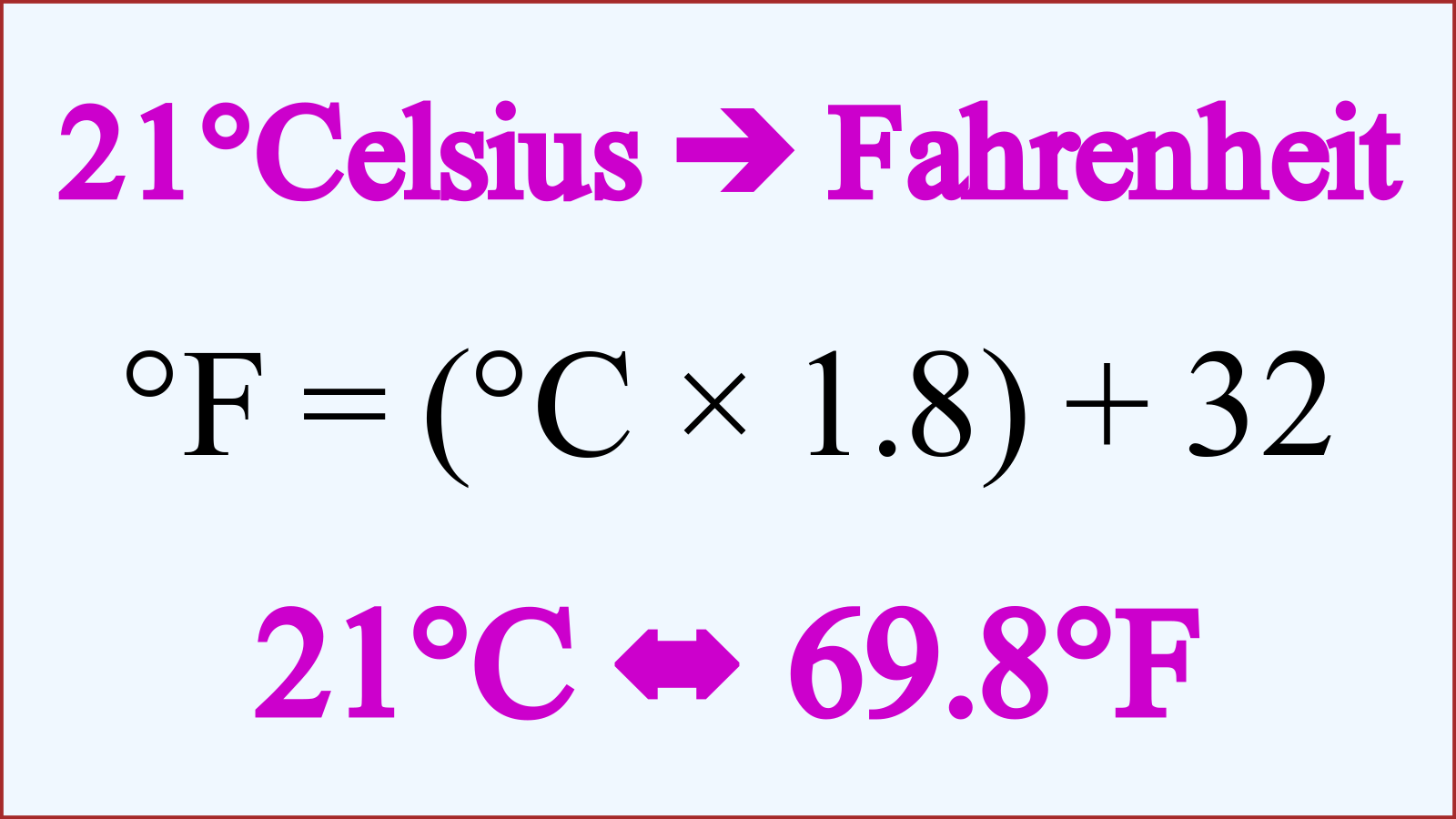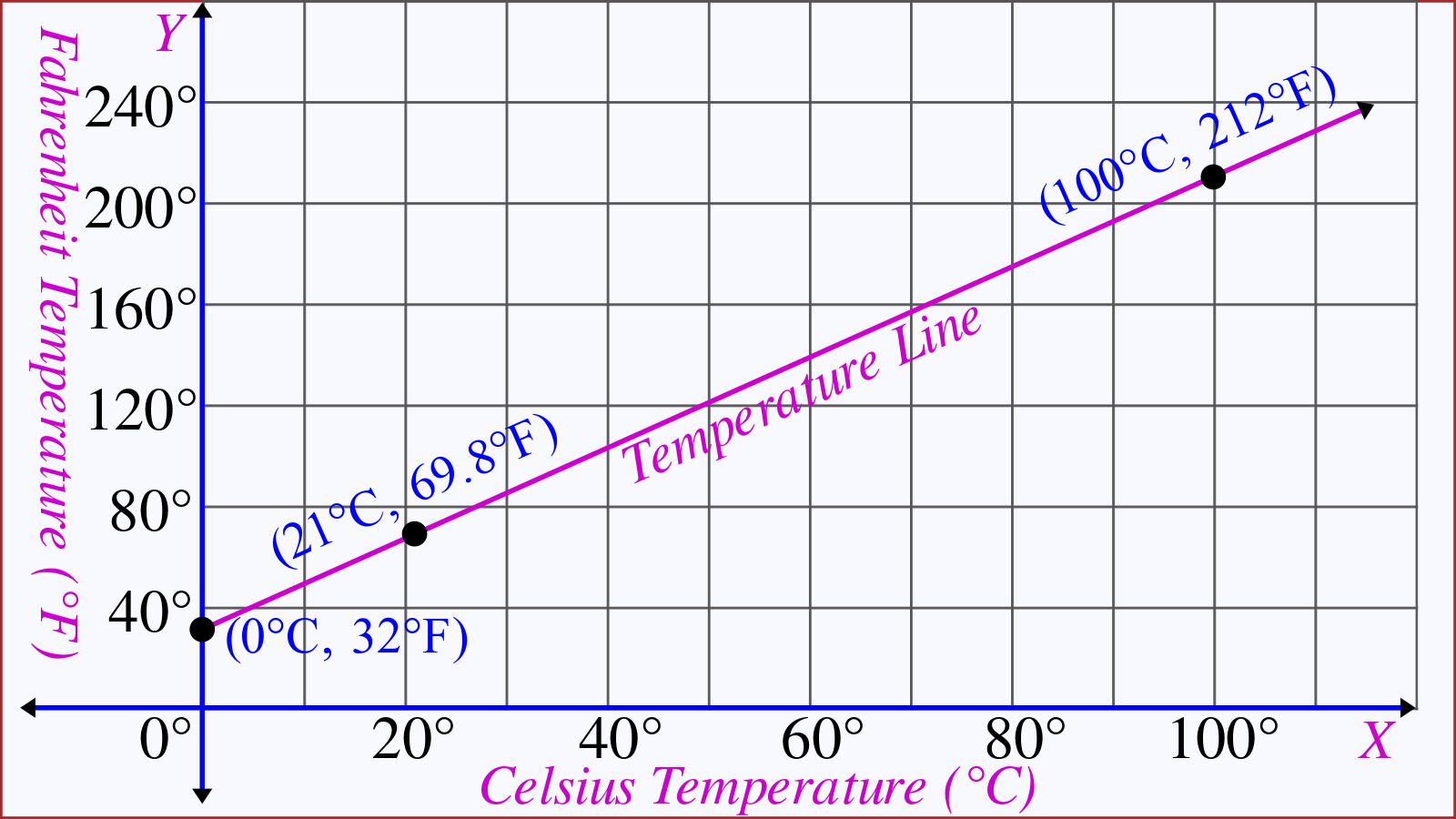21 Degrees Celsius to Fahrenheit: Conversion & Visualization
By the end of this lesson, you will be able to
- convert 21 degrees Celsius to Fahrenheit.
- convert temperature scales between Celsius and Fahrenheit.
The simple answer: 21 degrees Celsius is equivalent to 69.8 degrees Fahrenheit.
Temperature is a fundamental physical property that influences everything from our daily comfort to global weather patterns. While Celsius is the most widely used temperature scale in the world, the United States and a few other countries primarily use Fahrenheit.
This article will guide you how to convert 21 degrees Celsius to Fahrenheit, explore the underlying principles of temperature conversion, and provide some practical applications that enhances your deeper understanding of temperature scales.

Celsius to Fahrenheit Conversion Formula
To convert a temperature from Celsius to Fahrenheit, we use the following formula: where,
- °F represents the temperature in Fahrenheit.
- °C represents the temperature in Celsius.
Understanding Temperature Scales
Let's briefly explore the two primary temperature scales:
Celsius (Centigrade): Developed by Anders Celsius, this scale sets the freezing point of water at 0 degree and the boiling point at 100 degrees.
Fahrenheit: Created by Daniel Gabriel Fahrenheit, this scale defines the freezing point of water at 32 degrees and the boiling point at 212 degrees.
Calculating 21 Degrees Celsius to Fahrenheit
Let's convert 21 degrees Celsius to Fahrenheit using the conversion formula.
Given that degrees in Celsius C = 21.
The formula for converting Celsius to Fahrenheit:
Thus, 21 degrees Celsius = 69.8 degrees Fahrenheit.
Therefore, 21 degrees Celsius is equal to 69.8 degrees Fahrenheit.
Visualizing Temperature Conversion
To better understand this conversion, imagine a number line with Celsius on one axis and Fahrenheit on the other. The formula provides a linear relationship between the two axes.

Plot the two temperature scales: the Celsius on the x-axis and the Fahrenheit on the y-axis. We see the three points: (0°C, 32°F), (21°C, 69.8°F) and (100°C, 212°F) are on the Temperature Line. Let's Explain these three points.
Freezing Point: 0° Celsius on the x-axis, would align with 32 degrees Fahrenheit on the y-axis. So, the point (0°C, 32°F) indicates the freezing point of water on the Temperature Line.
Boiling Point: 100° Celsius would correspond to 212° Fahrenheit. Thus, the point (100°C, 212°F) represents the boiling point of water on the Temperature Line.
21 Degrees Celsius: For 21 degrees Celsius, the conversion formula then determines the corresponding value on the Fahrenheit scale, which is 69.8 degrees Fahrenheit. Observe that, 21°C would lie between the freezing and boiling points of water on the Celsius scale. On the other hand, 69.8°F would lie between the freezing and boiling points of water on the Fahrenheit scale.
Therefore, the point (21°C, 69.8°F) must be between the freezing and boiling points of water on the Temperature Line. At this point, the condition of water is neither freezing nor boiling.
Why is Temperature Conversion Essential?
Accurate temperature conversion is crucial in various fields:
- Meteorology: Weather reports and forecasts often need to be presented in both Celsius and Fahrenheit, depending on the target audience.
- Cooking: Many recipes are provided in either Celsius or Fahrenheit. Accurate conversion is crucial for achieving the desired results in cooking and baking.
- Industry: Industrial processes, such as manufacturing and chemical engineering, often rely on precise temperature control. Conversion between units is necessary to ensure compatibility with different equipment and systems.
- Science and Research: Scientific experiments and research frequently involve temperature measurements. Accurate conversion between units is essential for data analysis, comparison, and reproducibility.
- Medicine: Medical equipment and pharmaceuticals often have temperature specifications in either Celsius or Fahrenheit. Proper conversion is vital for patient safety and medication effectiveness.
Converting 21 degrees Celsius to Fahrenheit involves applying the formula: which yields a result of 69.8 degrees Fahrenheit. This conversion process has significant implications in various fields, from everyday life to scientific research. Understanding the principles of temperature and the relationship between different scales is crucial for effective communication, accurate measurements, and informed decision-making.
I hope this content helps you.